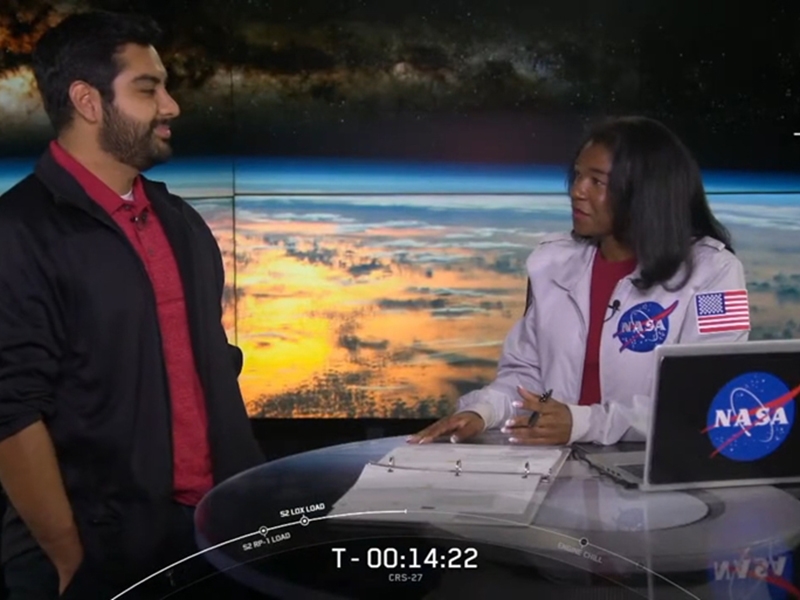
A small satellite — a so-called “CubeSat” — developed by mechanical engineering researchers at the U of A launched March 14 from NASA’s Kennedy Space Center in Cape Canaveral, Florida.
As part NASA’s Educational Launch of Nanosatellites mission and CubeSat Launch Initiative, the U of A satellite, a 10-centimeter, or nearly 4-inch, cube dubbed ARKSAT-1 entered space aboard the SpaceX Falcon 9, a commercial resupply services mission to the International Space Station for NASA.
In late April, ARKSAT-1 will be deployed from the International Space Station and will illuminate a light-emitting-diode from orbit and use a ground spectrometer to track and perform atmospheric measurements.
At the end of its mission, ARKSAT-1 will also deploy a lightweight balloon that will inflate and increase the satellite’s drag to help it reenter Earth’s atmosphere and safely disintegrate. The technology used for this second mission was developed to help reduce the amount of time a small satellite remains “space junk” in low orbit after a mission has ended.
Led by Adam Huang, associate professor of mechanical engineering, development of ARKSAT-1 was a collaborative effort, including contributions from Larry Roe, associate professor of mechanical engineering and director of the Arkansas Center for Space and Planetary Sciences; Vincent Chevrier, associate research professor at the Arkansas Center for Space and Planetary Sciences; Ed Wilson and Charles Wu at Harding University; Yupo Chan at the University of Arkansas at Little Rock; Constance Meadors at Pulaski Technical College; and many students.
ARKSAT-1 was funded by the Arkansas Space Grant Consortium. Tracking and communications for the satellite is supported by the Amateur Radio Club at the U of A.
Huang and Sam Cano, a doctoral student in Space and Planetary Sciences, attended the launch in Florida. Before the launch, Cano was interviewed by NASA and discussed the mission of ARKSAT-1.
About the University of Arkansas: As Arkansas' flagship institution, the U of A provides an internationally competitive education in more than 200 academic programs. Founded in 1871, the U of A contributes more than $2.2 billion to Arkansas’ economy through the teaching of new knowledge and skills, entrepreneurship and job development, discovery through research and creative activity while also providing training for professional disciplines. The Carnegie Foundation classifies the U of A among the few U.S. colleges and universities with the highest level of research activity. U.S. News & World Report ranks the U of A among the top public universities in the nation. See how the U of A works to build a better world at Arkansas Research News.
Topics
Contacts
Po-Hao “Adam” Huang, professor of mechanical engineering
College of Engineering
479-575-4054, phuang@uark.edu
Larry Roe, associate professor of mechanical engineering
College of Engineering
479-575-3750, lar@uark.edu
Matt McGowan, science and research communications officer
University Relations
479-575-4246,
dmcgowa@uark.edu